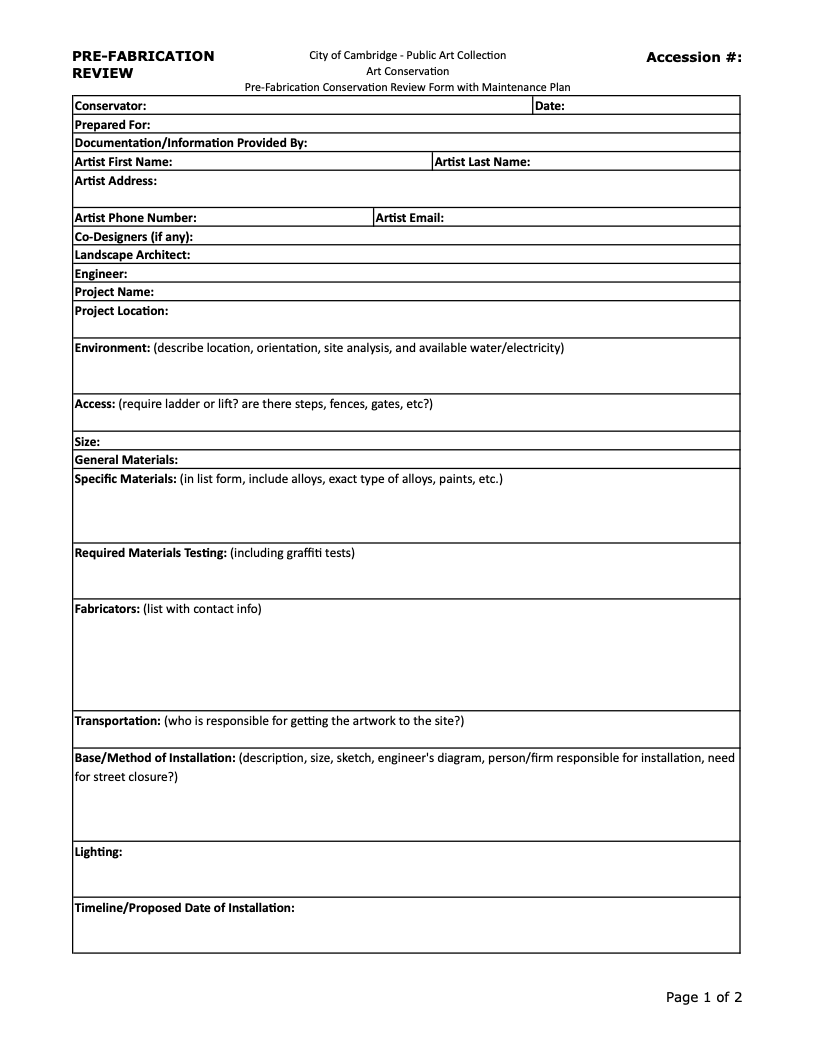Exhibiting public art presents many challenges for municipal institutions. Often public art offices are working under tight budgets while dealing with multiple municipal organizations to secure the financial and managerial aspects of displaying art in the public domain. One of the most challenging aspects of publicly exhibited works is their conservation. These works are often forced to directly withstand the elements, but also must be protected from graffiti and defacement. There have been examples of conservation issues forcing a public art office to remove an artwork, and Danielle Brazell from the Office of Cultural Affairs in LA described having to de-accession a work that could not be salvaged due to weather-related damage.
The Cambridge Arts Council has worked to develop a streamlined system to avoid these problems with a pre-emptive strategy. For every work they develop, they undergo a pre-fabrication conservation review. Their system is nationally recognized, and was first developed and published by Rika Smith McNally in 1999, and then published in the book Conservation and Maintenance of Contemporary Public Art in 2002. Since then, these reviews have shown how an organization can operate smoothly both before and after a work of art is installed in the public domain.
Cambridge Arts Council (CAC), works with the artist, fabricators, administrators, landscape architects, and structural engineers to understand the needs and potential problems for each work of art. They state that this is not a process meant to “judge” the physical acceptability of an artwork, but rather to keep all parties involved in the installation process informed, while prompting discussions of improvements to the methodology or materials for the work.
The pre-fabrication review is a structure which CAC has made open to all, with their paperwork for this process openly available on their website. On it, you will find the identification of all parties involved, materials, and methods of installation. There is information regarding the lighting, the timeline of the project, and an entire page devoted to the artist’s conceptual statement, physical description of the end result, discussion notes, as well as a maintenance plan and any expected costs. Similar methodologies have been adopted by other municipal public art institutions, such as Arlington Arts in Virginia.
Streamlining this process allows for all parties involved to have an open awareness of the requirements of each work, and to understand the conservation needs of each work so that they may be efficiently incorporated into the budget of this work. By making this process transparent and public, CAC is encouraging other organizations to follow along with this process, so they too may have a better, pre-emptive understanding of the projects they take on as an institution.
It is important to note that real-world physical requirements of a public art work are no longer the only consideration. As the art world evolves to incorporate digitally-minded processes into galleries and museums, public art is also beginning to see changes and advancements with new virtual and augmented technology apps for engagement with public art. From a collaboration between Jeff Koons and Snapchat, to more politically minded AR enhanced murals, there is a lot of potential for this new technology. With this new technology comes the question of digital conservation of these works. With an AR enhanced mural, how often would a conservationist return to the artwork to make sure that it functions correctly with the AR technology? To what extent might technological “graffiti” be used to cause this technology to glitch? While these new technologies are capable of bringing in tech-savvy audiences, they definitely add questions that complicate the role of the conservator.





